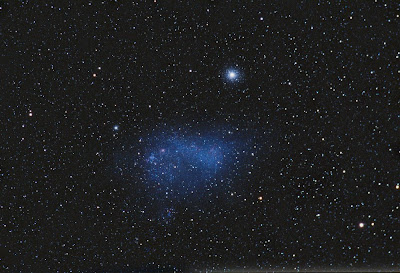JuanAustin wrote:just out of curiosity, if one of these globular cluster stars "evaporated" as you put it, and was captured by our sun when it strayed nearby, what would be the effect on the earth and the other planets as it set up shop as a binary? what else could happen other than becoming a binary?
We are more likely to encounter a near pass by a star that has nothing to do with a globular cluster. That said, we are unlikely to capture any other star. In general, when you have two bodies that are not in a closed orbit around each other, one can never capture the other. A capture requires a transfer of momentum (a loss of energy by one body) involving an interaction with a third body. So it is possible that a binary system might capture a third member, but not likely that the Sun could capture another star. I say "not likely" rather than "impossible" because we do have Jupiter in our system which is massive enough to act as the third body, but realistically, it could only do so if the captured star was already in a nearly closed orbit to begin with (that is, only a touch over its escape velocity with respect to the Sun).
if it happened to be the same size as our sun, would the doubling of light burn us to a crisp?
If another star passed by within about 1 A.U. of the Earth, the increased energy would certainly be disastrous (pun intended). But this passing star would almost certainly disrupt all the planetary orbits, so even if we didn't get crisped by the star itself, we'd end up in a new orbit outside the habitable zone, or possibly be ejected from the Solar System completely. Any reasonable scenario you can construct with another star passing through our system pretty much means the end of most or all life on Earth.
 Globular Star Cluster 47 Tuc
Globular Star Cluster 47 Tuc